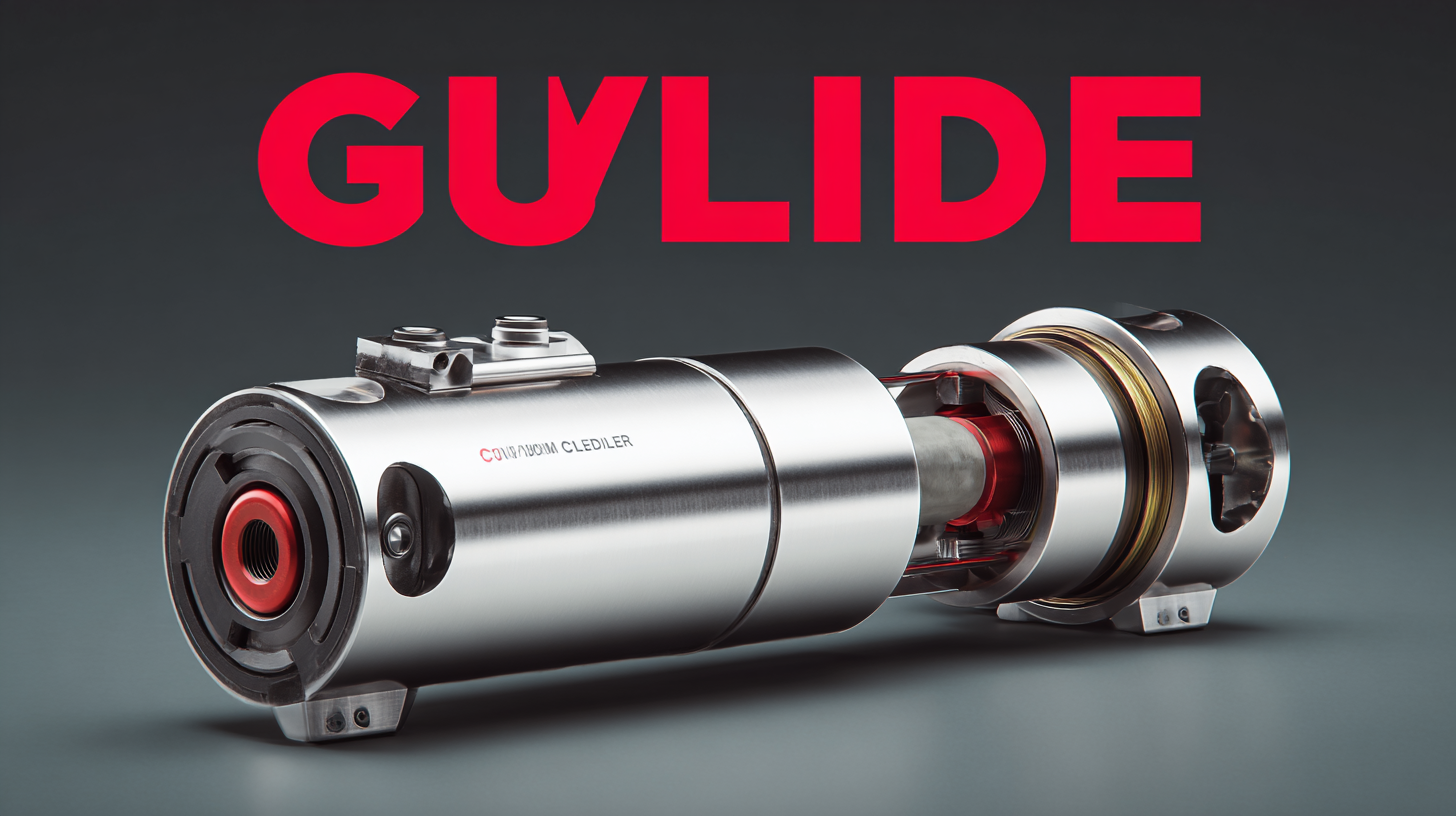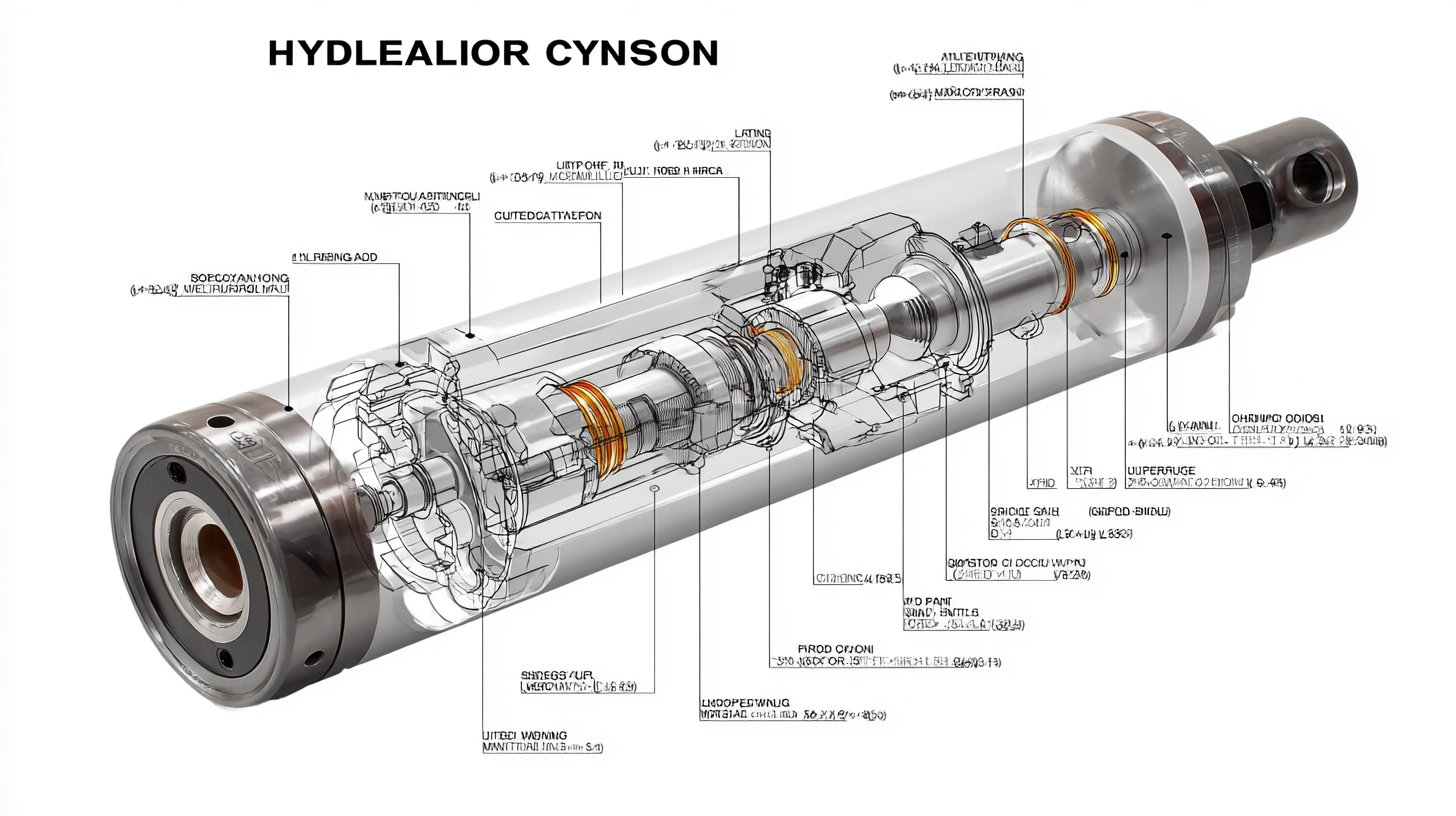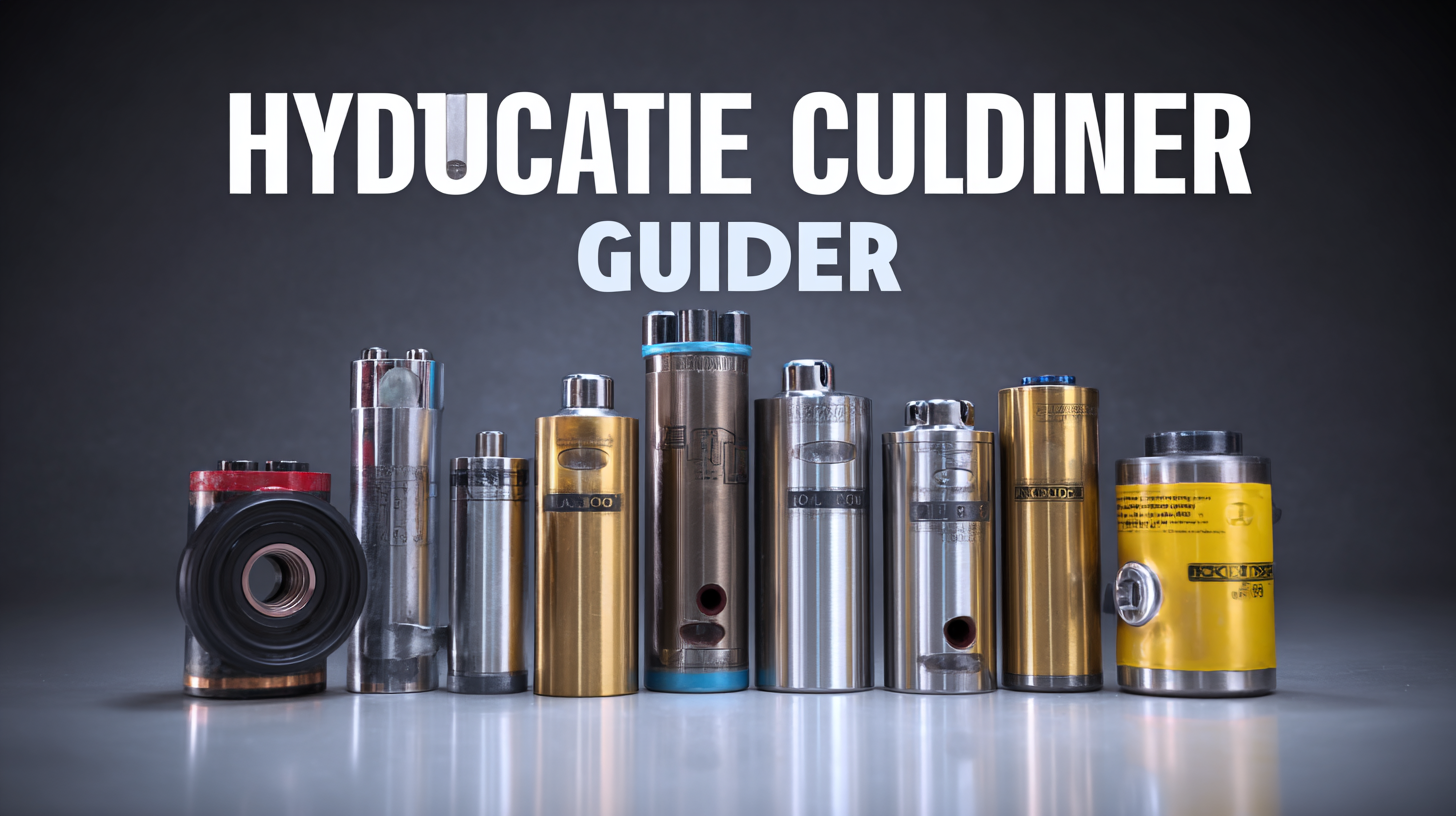
 Hydraulic cylinders are vital components widely used across various industries, performing the critical function of converting hydraulic energy into mechanical force. According to a recent market research report by MarketsandMarkets, the global hydraulic cylinder market size is projected to grow from USD 12.45 billion in 2020 to USD 18.19 billion by 2025, at a CAGR of 7.83%. This significant growth underscores the importance of understanding the specifications and features of different types of hydraulic cylinders. As global buyers navigate the complexities of selecting the right hydraulic cylinder for their specific applications, it becomes essential to comprehend the unique characteristics and suitability of each type. In this ultimate guide, we will delve into the various specifications that define the best hydraulic cylinders, helping buyers make informed decisions tailored to their operational needs.
Hydraulic cylinders are vital components widely used across various industries, performing the critical function of converting hydraulic energy into mechanical force. According to a recent market research report by MarketsandMarkets, the global hydraulic cylinder market size is projected to grow from USD 12.45 billion in 2020 to USD 18.19 billion by 2025, at a CAGR of 7.83%. This significant growth underscores the importance of understanding the specifications and features of different types of hydraulic cylinders. As global buyers navigate the complexities of selecting the right hydraulic cylinder for their specific applications, it becomes essential to comprehend the unique characteristics and suitability of each type. In this ultimate guide, we will delve into the various specifications that define the best hydraulic cylinders, helping buyers make informed decisions tailored to their operational needs.
In the rapidly expanding global hydraulic cylinder market, which is projected to grow from USD 14.3 billion in 2021 to USD 18.3 billion by 2027, understanding key industry standards is essential for global buyers. These specifications are not merely regulatory guidelines; they are benchmarks that ensure performance, reliability, and safety in various applications. Buyers must familiarize themselves with the critical parameters, including pressure ratings, bore sizes, and stroke lengths, to make informed purchasing decisions.
Moreover, certifications like Nadcap play a significant role in maintaining quality in specialized sectors such as aerospace. Achieving Nadcap certification helps manufacturers to assure clients that their hydraulic cylinders meet rigorous industry standards, reinforcing design quality and compliance with necessary regulations. As stakeholders engage in the development of performance standards, collaboration and clear communication become crucial to align testing methodologies and evaluation criteria. By focusing on these benchmarks, global buyers can ensure that the hydraulic cylinders they procure not only meet their operational needs but also enhance overall project success.
When considering hydraulic cylinders for various applications, several critical factors influence their performance. These factors include the material composition, design features, and operational efficiency, which can significantly affect the stress state within the cylinder. Research indicates that stress states can vary dramatically based on the materials used, such as steel versus composite, impacting longevity and reliability in demanding industrial environments.
Recent market analyses forecast the hydraulic power market to reach $24.07 billion by 2031, driven by increasing demand across agricultural and industrial sectors. As noted in reports, the growth rate is expected to be 5.8% CAGR, highlighting the importance of advanced technologies that enhance hydraulic system performance. As industries turn to more innovative solutions, sensor technologies for monitoring hydraulic valve and system performance are becoming crucial in maintaining optimal operational conditions and efficiency, ensuring that both conventional and advanced hydraulic systems meet the evolving needs of modern applications.

When it comes to manufacturing durable hydraulic cylinders, material selection plays a pivotal role in ensuring longevity and performance. Common materials like steel and aluminum are preferred due to their high strength-to-weight ratios and resistance to corrosion. Steel, particularly, is favored for its exceptional tensile strength, allowing for higher pressure ratings and the ability to withstand harsh operating conditions. However, it is critical to choose the right grade of steel, as alloy variations can significantly influence the overall durability of the hydraulic cylinder.
Additionally, using advanced coatings and treatments can enhance the performance of hydraulic cylinders. For instance, heat treatment processes can improve hardness and wear resistance, while galvanization offers added protection against corrosion. Manufacturers also explore innovative materials such as composite materials for specific applications, providing a balance between weight and strength. By prioritizing material selection, global buyers can ensure that they invest in hydraulic cylinders that not only meet their operational demands but also ensure a longer service life, ultimately leading to reduced downtime and maintenance costs.
When selecting the right hydraulic cylinder for your needs, it is essential to understand the various types and their specifications. Hydraulic cylinders come in different configurations—single-acting, double-acting, and telescopic—that cater to specific application requirements. For instance, a double-acting cylinder provides power in both extension and retraction, making it suitable for applications that require precise control. On the other hand, single-acting cylinders are ideal when the load only needs to move in one direction, allowing for a more straightforward and cost-effective solution.

Tips: Always assess the force requirements and stroke length necessary for your operation. Also, consider the cylinder's mounting style and any environmental factors, such as temperature and potential exposure to contaminants, which can impact performance. Recent advancements with servo electric cylinders are revolutionizing hydraulic applications, allowing for increased precision and efficiency in operations like CNC bending.
Whether you are working on heavy-duty mobile machines or looking for press technology, evaluating the distinctions among hydraulic systems is crucial. Knowing the roles that different hydraulic cylinder designs play can significantly enhance your operational capabilities. If you prioritize efficiency and sustainability, exploring electro-hydraulic systems is worth considering, as they integrate electric prime movers to optimize performance in hydraulic operations.
Maintaining hydraulic cylinders is crucial for ensuring optimal performance and longevity in various industrial applications. According to the Hydraulic Institute, regular maintenance can extend the lifespan of hydraulic cylinders by up to 30%. This involves not just routine inspections but also adhering to specific maintenance tips tailored for different working environments. Key practices include regularly checking fluid levels and ensuring that seals are in good condition to prevent leakage, which can significantly impact performance and efficiency.
Furthermore, a report from the International Fluid Power Society indicates that adopting a proactive maintenance strategy can reduce overall operational costs by 25%. This is achieved through timely identification and correction of potential issues before they lead to significant downtime or costly repairs. Essential maintenance practices include cleaning the cylinder’s exterior to prevent dirt accumulation, monitoring temperature fluctuations to avoid thermal stress, and ensuring proper alignment to reduce wear on components. Implementing these strategies is vital for global buyers who rely on hydraulic systems for their operations, as maintaining cylinder integrity translates to enhanced productivity and reliability in their machinery.
